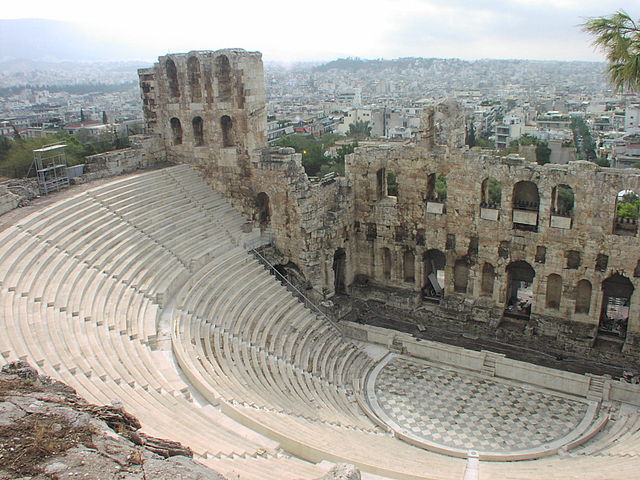A special supplement of the prestigious Canadian newspaper "Globe and Mail" ranks the Odeon of Herodes Atticus in Athens second among the top venues for live performances.
It is entitled "Top venues for live theatre" and presents the best places in the world where you can enjoy theatre, music or dance performances. As for the Odeon of Herodes Atticus, the issue tells its story and defines it as the best example of an authentic Greek amphitheatre, describing it as "the perfect place where modern music meets ancient atmosphere", which is the ideal for all artists, as stated by the publication in "Globe and Mail".

First in the ranking is the Minack Theatre in Cornwall, England, followed by the Odeon of Herodes Atticus in Athens, the Sydney Opera House, La Scala in Milan, Carnegie Hall in New York, the Bolshoi Theatre in Moscow and other famous theatres throughout the world.
Odeon of Herodes Atticus
The Odeon of Herodes Atticus dates back to the ancient Roman period and is located on the southwestern side of the Acropolis hill in Athens.
It was built at a rapid pace in the 2nd century BC with resources provided by Herodes Atticus in memory of his wife Aspasia Annia Regilla, who died in 160 BC. The building was designed primarily for music events and was therefore called Odeon.
Its construction was necessary due to the collapse of the Odeon built in the centre of the ancient Agora in Athens by the general of Emperor Augustus Agrippa around 15 BC, which, in turn, replaced the previous Odeon of Pericles damaged by Lucius Cornelius Sulla in 85 BC.
The area intended for the audience included 32 rows of marble seats and had a capacity of about 5,000 spectators. As in Roman theatres, the orchestra (stage) was semicircular in shape. The stage building was at the far end of the stage and had three 28-metre high floors, two of which have been preserved to date. The Odeon was covered with cedar wood roofing.

Odeon of Herodes Atticus in the mid 19th century.
A variety of sources reveal that it operated for only 105 years, accounting for the fact that in the 3rd century, i.e. in the year 267, many buildings in Athens, including the Odeon, were destroyed by the invasions the Heruli.
Moreover, the different findings discovered during excavations, such as skulls of humans and bulls, suggest that during this period the site was used for gladiator fights and bullfighting. It seems however that the walls of the building were later used as fortifications, as it had been included in the fortress walls surrounding the foot of the Acropolis. In addition to the ruins of small houses, the remains of a small church were also discovered in the Odeon as well as a basement in the middle of the stage, which extends along its length. In the following centuries it was almost covered by embankments, its only visible part is the high wall of the stage and the entire facility looks more like a bridge.